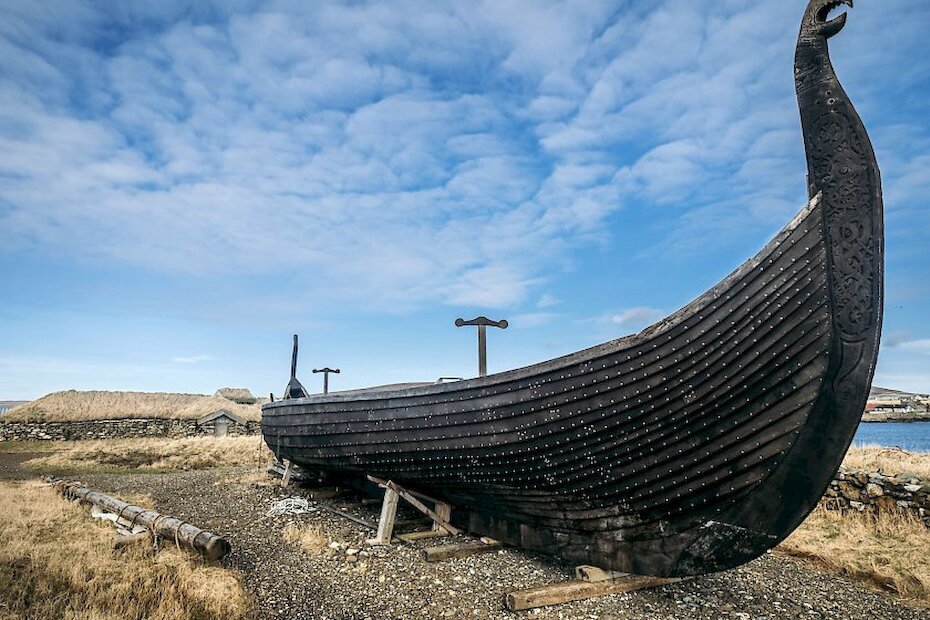Viking Unst
But it’s in Britain’s northernmost inhabited island, Unst, that you’ll find the greatest concentration of evidence of the Viking raiders’ presence and subsequent Norse occupation. An archaeological project there, Viking Unst, has excavated three Viking longhouses and another, at Sandwick, was explored towards the end of the last century. But these are merely a fragment of Unst’s Viking heritage; there are more than 60 such sites on the island. Other evidence includes Viking crosses in graveyards at Framgord and Lund. Just south of Haroldswick, you can step aboard a replica Viking longship, the Skidbladner, and a replica longhouse.
The three most recently-excavated sites used modern archaeological methods to extract the maximum amount of information.
At Belmont, not far from the ferry terminal serving the island, the inhabitants were occupied in grazing their animals on hay meadows and seem also to have been involved in producing soapstone (steatite) items for household use, such as a lamp; there was steatite working nearby. Close examination of excavated material revealed that iron-working had also taken place.
At Hamar, it appears that the longhouse was built on the site of an earlier “pit house”, partly dug into the ground, and there may, at some stage, have been a feasting hall or living area before the longhouse itself was constructed. The surrounding area seems to have been cultivated over a long period, ending in the 17th century.
The site at Underhoull is close to another longhouse excavated in the 1950s and to a broch. The house produced many finds, including lots of soapstone items such as line sinkers, together with pieces of pottery and sharpening stones. The house there, which had been extended or altered many times, had a suspended timber floor, something familiar from homes of our own era.


